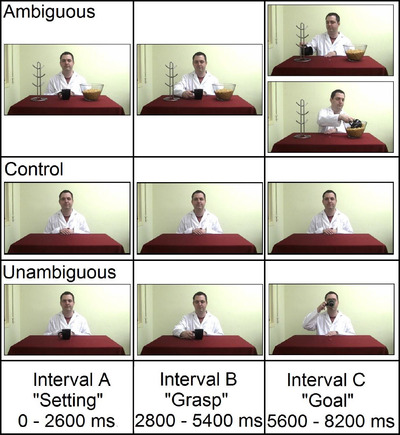Highlight Photo
Using EEG and machine learning to predict action goals
Using EEG and Machine Learning to Predict Action Goals from Data in the Human Mirror System

Participants were seated in front of a monitor with a bowl of cereal to their left, a cup rack to their right, and a coffee mug directly in front of them. Participants observed and imitated the following stimuli: (Top row) Ambiguous goal. Actor grasped a cup and used it to scoop cereal from the bowl to his left or placed the cup on a cup rack to his right. (Middle) Non-action control. Actor performed no action for entire interval. (Last row) Unambiguous goal. Actor grasped a cup and used it to drink. Each interval was preceded by a 2000 ms fixation cross (EEG baseline). Additionally, each interval was separated by a 200 ms fixation cross. A green fixation cross was presented after each trial for five seconds, during which the participants imitated the action. This was followed by a red fixation cross which cued the participants to complete the action and return to the ready position. This was followed by a blank screen presented at a jitter of 1500 to 3000 ms.
Credits: Washington State University Smart Home IGERT Program






